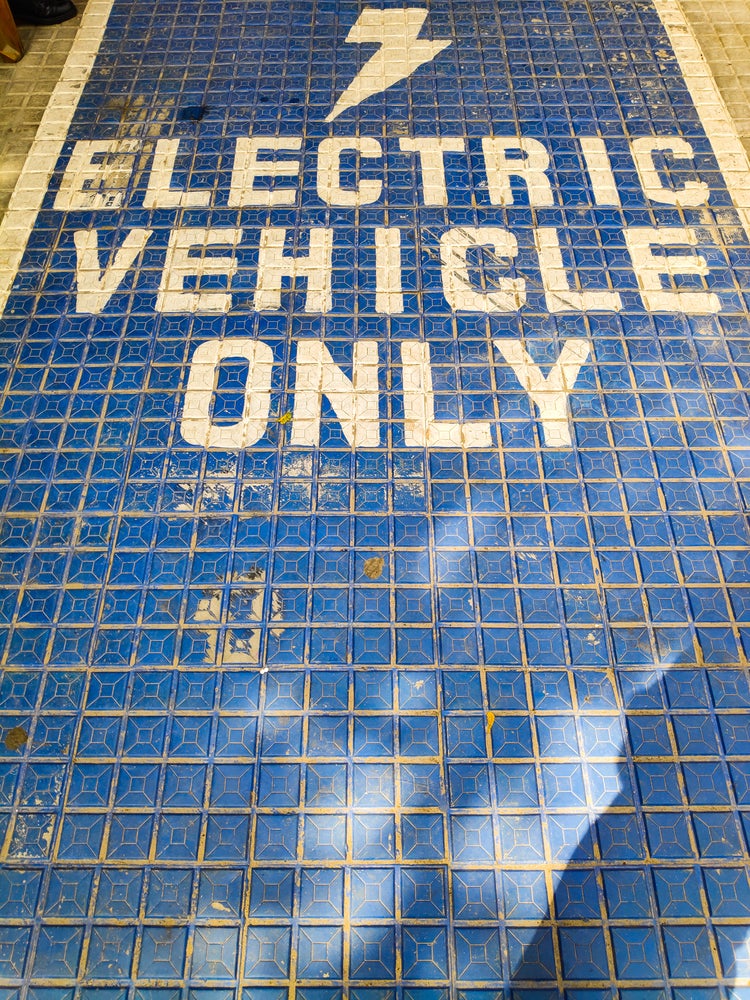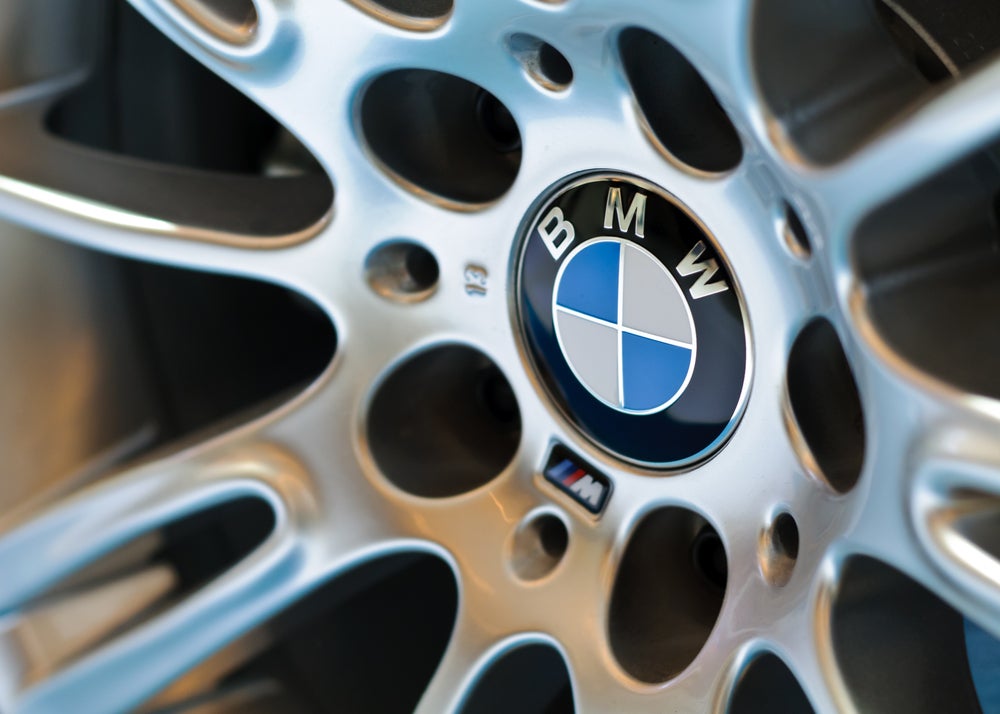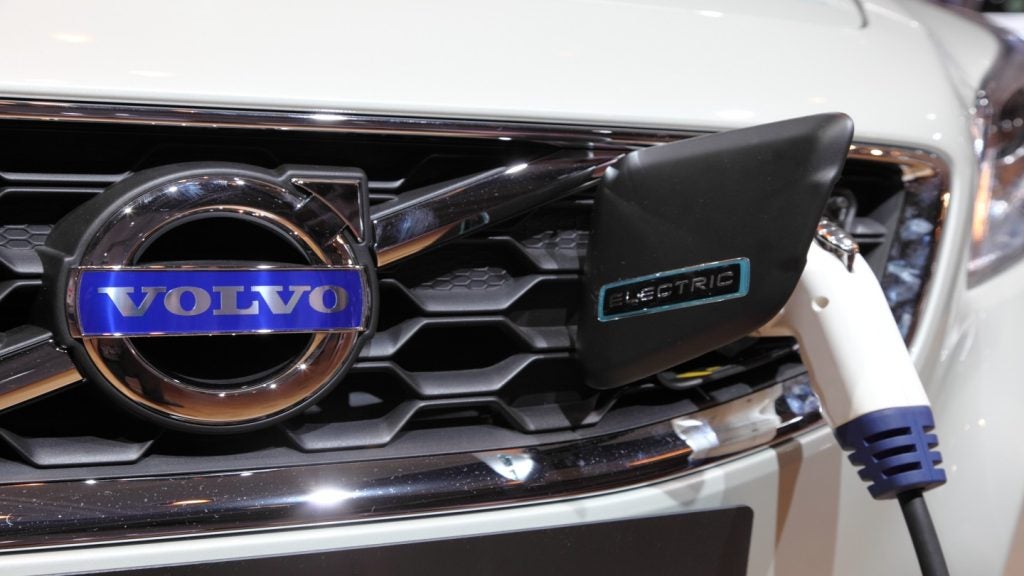Motor Finance brought a
number of experts together for a round table to discuss the current
technological requirements of dealers and how integration with
lenders systems can be managed.

This month, Motor
Finance, in collaboration with Frontline Solutions, invited a
collection of point of sale experts to attend the second of 12
round table discussions on the future of the dealer finance
market.
The following pages highlight
the debate and discussion, in which brokers, lenders and
independent consultants made clear their feelings and opinion on
the important issue of integrating the technology and systems
essential to optimising motor finance business today and in the
future.

How well do you really know your competitors?
Access the most comprehensive Company Profiles on the market, powered by GlobalData. Save hours of research. Gain competitive edge.

Thank you!
Your download email will arrive shortly
Not ready to buy yet? Download a free sample
We are confident about the unique quality of our Company Profiles. However, we want you to make the most beneficial decision for your business, so we offer a free sample that you can download by submitting the below form
By GlobalDataTalking from the
experiences of your own business, what do you think are the major
technological process gaps in point of sale?
Andy Shuter:
The big thing that springs to mind for me is the inability to
quickly get hold of information on manufacturer finance
schemes.
It’s not just that they’re
extremely difficult to manage and maintain (since they swap and
change so much) but also because a lot of them are attached to
marketing programmes.
What we tend to find as a
technology provider is that a friendly dealer will happen to reveal
that a five-year, zero percent finance scheme will start at
midnight, prompting us to quickly pump all of the details into our
system.
We don’t store any
manufacturer’s scheme dates unless it is authorised for us to store
them, but it is a big issue at the moment.
Joe Myers: From
a different perspective surrounding data, there are a couple of
things causing us challenges. One is that it needs to be made
easier and more effective to process deals – at the moment rekeying
comes into the process a lot.
Also as we go into the used car
market and refinancing those vehicles at a later stage, the
deletion of records from particular finance organisations causes a
challenge. That slows down the whole process for us.
Robert
Hutchinson: I would agree with the issue of data. Dealers
keying-in customer information are very prone to error. We see
problems with names input into the system that don’t match credit
reference agency records – Chris instead of Christopher can result
in a decline because the customer isn’t found and rural addresses
or flats can be difficult to match.
Paper and fax payout processes
are cumbersome and outdated. They work well but there are better
options available. Electronic signatures and signature pads are
clearly the future and this is something our business is currently
working on.
Graham Hill: As
a broker, we need consistency among the various quoting systems.
Picking up on Andy’s point, getting information on captive finance
programmes from dealers to update quoting can be a bit of
nightmare. There needs to be more consistency.
The lenders don’t work together,
obviously, because they’re competing against each other, but as a
broker you want to be able to pull them all together so as to be
able to present their products to the customer.
Mark Spink: I
see an awful lot of people in this industry who treat customers as
the property of their business. There are a lot of things, in terms
of communication for instance, where things could be made
easier.
For example, let’s look at
decisions that come back from lenders to dealers. Some lenders send
them back as fields which allow a dealer to extract the commission
information. But other lenders will not send the decision back in a
format that can be read – they’ll send it back as a large chunk of
text. Somebody then has to sit down, find the commission
information and retype it back in.
There’s no coordination in the
industry – everybody is vying to say: “It’s my customer, there’s no
way I’m going to let anybody else have him” and from a service
provider’s point of view, it can be a frustration.
Electronic signatures, which
were mentioned earlier, are another area where standardisation is
an issue. Can you imagine a situation where lenders are all going
to go out and provide their own electronic signature pads? A
business manager might have six or seven different models of ePad
on his desk.
James Tew: For
me there are three gaps. One is integration with lenders. You’ve
got some lenders which are more than accommodating when it comes to
providing information on how you can get an application to them and
you’ve got some who believe that information is the Crown Jewels
and it’s their right not to share it.
The second is residual value
(RV) data. Some lenders still have this aversion to allowing third
parties to access their RV data for the purpose of making
calculations.
The third one is bureau
information. People need to use bureau data to qualify customers
more effectively, both at the showroom and also on the web. Dealers
often spend hours selling a customer a car only to find that the
customer gets declined. They talk about how many cars they sell,
but they don’t look at the downside – the cost of not doing a
deal.
If a dealer wants to offer the
customer the right kind of deal at the right kind of price this
information needs to shift away from the lenders and push further
up into the sales process.
Martin Hill:
Thinking with a dealer’s hat on, I would echo James’s thoughts. The
dealer is desperately keen for an integrated approach. When you’re
running through the sales process and it gets to the point of a
transaction, I think it’s very important that full integration with
lenders systems is available to the dealer.
I remember around 12 years ago,
Renault Financial Services had a system called Romeo. Dealers could
build a transaction, fire it to Renault, get an online assessment
and print off the documents.
From a dealer and a customer
perspective it was great. People walked out of a Renault dealership
at 5pm on a Saturday afternoon having bought a car, signed the
documents and awaiting delivery in the morning. My concern is today
we’ve actually gone backwards from that point.
 James
James
Hill: As technology has evolved, it is meant that in a
showroom environment there are so many different systems to log in
to. It goes back to the customer journey. In some cases, the number
of systems being used is a business prevention tool.
The showroom environment is
crying out for an all-in-one, fully integrated approach. It’s the
Holy Grail that I don’t think is ever going to be
achieved.
Mike Seaton:
When I look at Europe and the UK compared to the US, I think we are
in the Dark Ages. All of the things that have been mentioned here,
including e-contracting (which is employed in the States by
companies like Ford Credit and Nissan) are out there, and they
work.
It does appear that dealers have
more influence on the way finance technology develops in the States
because they have all been using a very large number of banks to
try and fund deals.
For 10 years now, there’s been a
network to connect pretty much all of the banks to all of the
dealers.
The other thing that seems to be
taking over now is that the consumer is more in control of what
goes on in the finance sale process – they want the cleanest deal,
the most transparent deal. The overall process of doing a deal must
be speeded up as a result. They’re doing it in the US because they
want to cut the cost down. We are still in the Dark
Ages.
Paul Ridge: I’d
echo these comments. In 2007, consumers had a much wider choice of
where to go to finance their cars. We’ve also seen the wholesale
markets freeze so that the finance deals in the showrooms have
become more attractive.
There are some zero% deals out
there and very low APRs. We’ll probably see personal loan rates
coming down again, so I think we need to move things quickly and
get engaged with online selling. When I’m buying anything, the
first thing I do is go online and have a look what the options
are.
We’re also seeing a demand for
greater collaboration. If I look at the mortgage market, they’ve
moved to a process where they wanted to give mortgage brokers
access to bureau data so they can sit down with a customer,
understand the panel of lenders they are working with and make sure
they were pointing that consumer towards the right lender. That
collaboration makes for a better customer journey.
 Who’s leading
Who’s leading
the way in terms of integration? What are the dos and
don’ts?
Robert
Hutchinson: It is difficult for me to comment on what
other lenders are doing, but integration can be a challenge for
dealers. After a recent system restructure we are now on a new
platform and the integration specification has changed.
There is a lot of communication
and testing required to make sure a link works correctly, and it
can take longer than I would like for some integrations to
complete. Having said that, once integrations are operational they
work well.
Mike Seaton:
Lenders need to start by viewing integration as a policy issue
rather than a technology issue. Do they want to do it or not? What
are the commercial reasons for doing it? Getting the mentality
right is the first thing. The technology side is probably easier,
once you’ve got the banks in line at least.
Andy Shuter: I
think lenders really have come round to the idea of integration in
the last few years and have really got to grips with it. They’re
not seeing it as a threat anymore.
Barclays, Santander and Black
Horse have all come full circle and have now realised that they’re
better off in than out. This year was the first time I’ve heard
from the mouth of one of the large UK lenders that they would not
be averse to being on a system alongside other lenders.
Joe Myers: In
terms of the information we provide, there are certain things that
we would like to happen.
For example, aggregating
consumer credit score and allowing it to go off to selected
partners based on the criteria that they have mapped out. That
would streamline the process and allow them to sell more vehicles,
sell more finance and so on.
However, at the moment it’s one
of the key areas that we cannot crack. The reason is this lack of
desire from lenders to share the model that says: “We will accept
and do business on these terms.”
The reason we’ve been given is
that if lenders shared this, it would impede their ability to turn
up and down their appetite to risk. That takes away the flexibility
from the lender to be able to move up and down, and that causes an
issue.
Mark Spink:
When dealers send a piece of xml to a lender there are fairly
common generic bits of information that pretty much all lenders
agree should be there.
There should be a post code,
there should be a street name, a first and a surname – fairly
common stuff.
A problem arises when the
lenders start to ask for information such as the applicant’s
occupation type, or even what industry or sector they work in.
Everyone is going to have a different way of categorising this
information, and it’s a real challenge to write a system that
caters to everyone’s definitions.
What lenders have done in some
respects is to push part of their decision making process on to the
dealer.
Given that standard information
provided would give the lender an applicant’s job, it should be an
in-house process to decide what industry this person works in – why
leave it to the dealer to decide this?
It stands to reason that if the
dealer can find an ‘other’ option on the list, they will use that
anyway.
What reasons might
lenders and original equipment manufacturer (OEMs) have for
opposing integration?
Robert
Hutchinson: From a lender’s perspective, one of the things
you might fear – although this isn’t something I find to be a
particular problem in my business – is a situation where there is a
lot of business coming through one particular dealer.
This gives the potential to
bring on a disproportionate weight of business from one particular
demographic, which the lender might not be targeting.
Paul Ridge: One
of the things that comes up time and time again is the issue of
speed of decision.
If there’s a dealer or broker in
consultation with a consumer and they are firing applications to
four or five different lenders, things can go wrong if there’s an
obstruction to any of those lenders’ bureau searches.
It means they can’t make a
decision, and they have to get back to the broker or dealer and ask
them for more information – but by the time they have done this the
broker may have already placed the business elsewhere.
This is a challenge from the
integration point of view, but any system that could create a more
level playing field for this type of scenario would be
welcomed.

How will the changes for
the retail market over the next five years alter the technological
requirements of dealers?
Paul Ridge: I
think the OEMs will figure out how they can use the power of the
internet to drive traffic through their networks. The equation
they’re trying to work out is how to keep the confidence of dealers
in the market, but also make sure their point of sale opportunities
are maximised. I think dealers will have to be aware that
manufacturers will want to push their brand onto the
internet.
Dealer systems may well involve
taking applications when somebody has found the car they want,
input their details, and received pre-approval for
credit.
The dealer in that scenario is
not necessarily taking the customer through the sales process, but
just taking them through the process of saying: “Here’s your car”
and running through final validations.
I think the internet will
certainly become more prominent within the intermediary finance
sector.
Mike Seaton: I
think there have already been manufacturers moving in this
direction. Peugeot did a ‘buy a car online’ scheme, which was not
getting rid of the dealer but using the dealer just as the delivery
point. It’s the idea of the ‘all-in-one’ convenient deal – and the
dealer still has a role.
I go to the dealer, I can try
the car I want to buy, he finds me a price on the one I’m going to
sell, he finds me the finance, he sorts out all the other bits – I
don’t just buy something off the internet and then have to get rid
of the other one, so there’s a convenience about the whole dealer
situation.
If somebody on the internet
could break it down so you could achieve more or less the same
experience as you do with a dealer, it would grow very
rapidly.
In the States, at least the
dealers are protected because the OEMs can’t sell direct to
consumers – but over here, OEMs can and do own their own
dealers.
James Hill: I
think it will come down to manufacturers recommending certain
systems or processes that the dealers have to adhere to. But I also
think there will be continued consolidation of the resale
dealers.
In my experience, a lot of
manufacturers have dealers out there who are so far behind with
technology – they’re now getting bought by the bigger groups who
throw out their existing systems and replace them with
theirs.
Integration is going to spread
as consolidation continues.
James Tew:
Regulation is pushing more and more protection to the consumer.
It’s easier for them to trade on the internet now, full
stop.
What has to change is the
appetite for technology. As James said, there is a level of sheer
ignorance in the motor retail finance industry. It doesn’t like
change and it sits behind many other sectors in terms of
technology.
There are bright people out
there who do want change; they do want virtual transactions and
what will happen is, if there’s enough impetus behind them, they
will make a go of it.
This kind of player will drive
change in the market, and the motor industry is full of sheep that
will follow. As the old saying goes: why do half of dealers have
websites? Because the other half have.
Mark Spink:
I’ve been around quite a few dealerships and one thing that strikes
me is how much they live in the Dark Ages.
You go into a dealership and see
the business manager struggling on a machine that must be seven
years old and has had coffee poured into it several times – it
doesn’t seem to matter where I go, they all seem to have the same
computer.
So, in the next five years, I
hope they get new computers at least – it might actually increase
the amount of business they do. Beyond that, it’s a question of a
certain attitude at the top of the business, and that is ‘why on
earth should I put in a system or process to make my business
manager’s job easier because that’s what I pay him to
do?’.
I hope in the next five to ten
years there will be a revolution within the dealerships themselves
towards a clear understanding of what technology can actually bring
to their businesses.
Graham Hill:
Leasing is going to become massive among private individuals.
Consumers haven’t got it yet, but I think the education is starting
to roll forward now. Some 90% of the people out there may not know
the process of leasing, but as we move further down the line it’s
going to get bigger and bigger.
Robert
Hutchinson: I agree with a lot of the views presented, but
they need to be pulled together.
Cars can be sold on the internet
and they can be financed, but online part exchanges are difficult
to deal with. Part exchanges are not an issue with leasing, but
this only appeals to a limited customer demographic.
I can see dealers remaining
prevalent in 10 years’ time.
A lot of people think about
buying cars and look online – but it is only when they get into a
showroom and a sales person talks to them that it becomes easier to
say yes and actually buy. There is no hard sell online – and for
the industry to thrive people need to be sold to.
Joe Myers: I
think we could see some big differences in the motor industry as a
whole. Are we going to own cars? Will we rent? What effect will the
electric car have on us? From a data perspective that gives its own
challenges.
Our strategy has been to go down
the consumer marketing side – to find out exactly what it is the
consumer is trying to do, and to help dealers do that selling Rob
is talking about, but do it in the online environment.
It’s about finding ways to position a deal online in such
a way that it becomes attractive enough to accept. That will be
where I think we’ll get to and I hope we’ll get there in the near
future.







